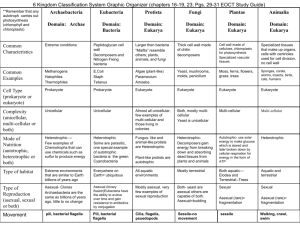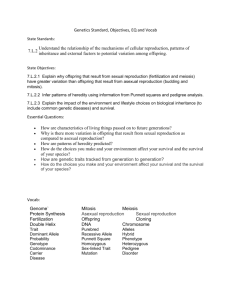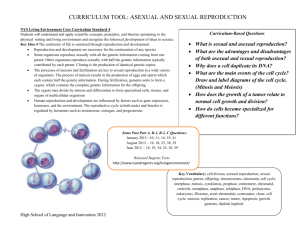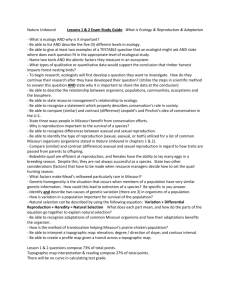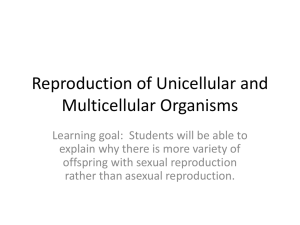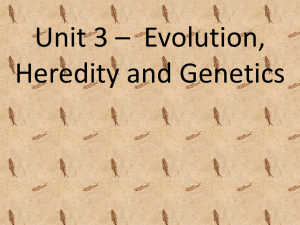Unit 12 Test Review What are the conducting cells in phloem tissue
advertisement
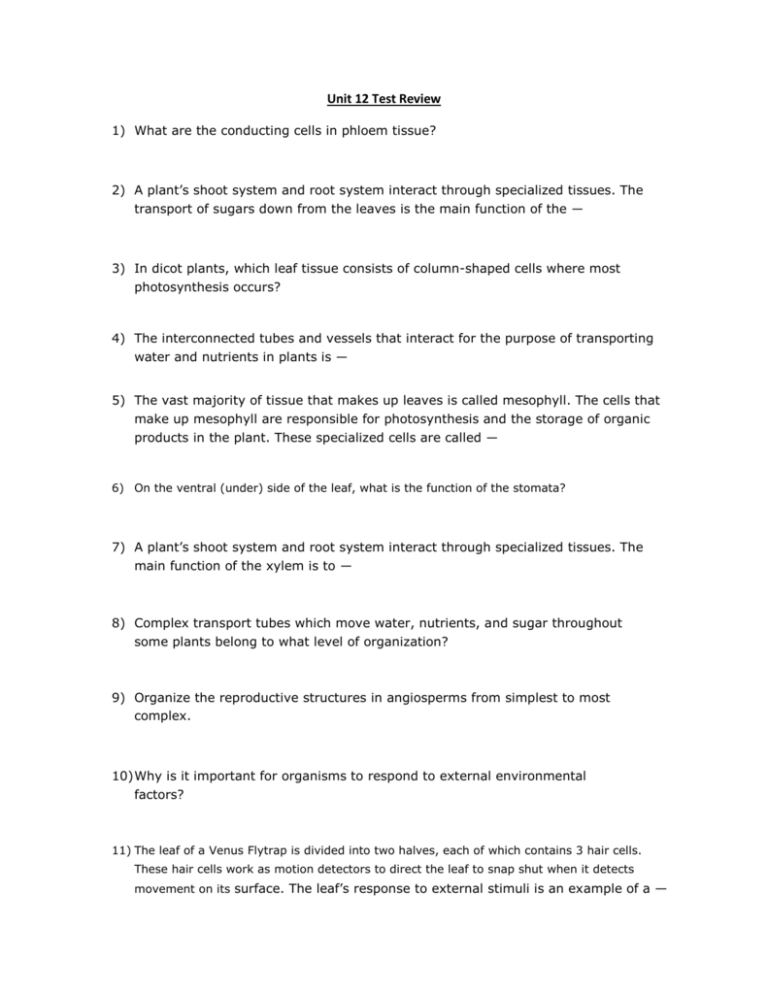
Unit 12 Test Review 1) What are the conducting cells in phloem tissue? 2) A plant’s shoot system and root system interact through specialized tissues. The transport of sugars down from the leaves is the main function of the ― 3) In dicot plants, which leaf tissue consists of column-shaped cells where most photosynthesis occurs? 4) The interconnected tubes and vessels that interact for the purpose of transporting water and nutrients in plants is ― 5) The vast majority of tissue that makes up leaves is called mesophyll. The cells that make up mesophyll are responsible for photosynthesis and the storage of organic products in the plant. These specialized cells are called ― 6) On the ventral (under) side of the leaf, what is the function of the stomata? 7) A plant’s shoot system and root system interact through specialized tissues. The main function of the xylem is to ― 8) Complex transport tubes which move water, nutrients, and sugar throughout some plants belong to what level of organization? 9) Organize the reproductive structures in angiosperms from simplest to most complex. 10) Why is it important for organisms to respond to external environmental factors? 11) The leaf of a Venus Flytrap is divided into two halves, each of which contains 3 hair cells. These hair cells work as motion detectors to direct the leaf to snap shut when it detects movement on its surface. The leaf’s response to external stimuli is an example of a — Use the following information for the next four questions. Students were instructed to design and implement a primary investigation to test for the presence of starch in fruits and vegetables. The results of the investigation showed that all of the tested fruits and vegetables contained starch. Students must now develop a question to further their investigation based on the results of the starch test. Material Safety Data for Iodine Iodine is very hazardous (irritant) in case of skin contact, eye contact, ingestion, or inhalation. It is hazardous (corrosive) in case of skin contact or eye contact. It is slightly hazardous (permeator) in case of skin contact. Length of contact determines the amount of tissue damage. Corneal damage or blindness may be a result of eye contact. Blistering and inflammation can be produced by skin contact. 12) What question is best suited for furthering the primary investigation described above? 13) Given the primary investigation described above, what would be the best way to organize the data collected? 14) The procedure for testing the fruits and vegetables for the presence of starch includes the use of iodine solution. According to the material safety data above, which safety equipment is required when performing the investigation? 15) How should students properly dispose of any leftover iodine solution from the primary investigation? 16) Macronutrients such as phosphorus and potassium play an important role in plant reproduction. Describe how the root and shoot systems of plants interact to allow reproduction to occur. 17) Plant cells communicate with tissues by control chemicals known as hormones. Auxin, a plant hormone is produced in the stem, buds, and root tips. Auxin moves to the darker side of a plant shoot promoting the elongation of cells on that side. This response to external stimuli is known as ― Eukaryotic Prokaryotic Animalia Plantae Fungi Protista X Y Heterotrophic Autotrophic/ Archaebacteria Eubacteria Autotrophic/ Autotrophic/ Heterotrophic Heterotrophic Heterotrophic Sexual/ Sexual/ Sexual/ Sexual/ Asexual Asexual Asexual Asexual Asexual Asexual Reproduction Reproduction Unicellular Unicellular Reproduction Reproduction Reproduction Reproduction Multicellular Z Most Most Multicellular/ Unicellular/ Few Few Unicellular Multicellular 18) Which characteristics of taxonomic groups will be used to complete the chart above in X, Y, Z order? 19) A student is studying wildflowers of Texas. The table below lists the types and number of wildflowers observed on a recent field trip. Day 1 Day 2 Day 3 Texas Toad-Flax - 13 Prairie Paintbrush - 21 Crimson Clover - 7 Bluebonnet - 17 Bluebonnet – 8 Purple Cone-Flower – 11 Yucca - 2 Which level of biological organization is represented on Day 2 of the student’s observations? 20) In most plants, roots typically grow downward and shoots grow upward. The shoot of a plant growing upward from the ground is an example of ― 21) Honeysuckle is a fragrant vine that is commonly seen growing on fences. The honeysuckle vine uses specialized structures to cling to the fence. This response is an example of ― 22) Celery stalks are made up of elongated cells arranged in tube-like strands with unevenly thickened cell walls. The elongated cells provide support and strength for surrounding tissues. These specialized cells are called ― 23) The main supporting cells in plants have very thick and rigid cell walls. They make up the tissue that is used in many types of fabric such as jute, flax, and ramie. Additionally, these types of cells are found in the tissues that make up apple cores. These specialized cells are called ―

